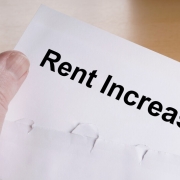Apartment Rents Forecast To Grow 0.8% Next Year
If you’ve been dismayed by this year’s apartment rent growth trajectory, brace yourself for 2024. Next year, multifamily rent growth will clock in at 0.8%, according to a new forecast by Markerr, compared to this year’s relatively robust 4%.
The 2024 prediction marks the lowest rent growth since 2020, or shortly after the pandemic began.
But because markets reflect regional differences, a closer look at different areas is important. For example, in 2023, Sunbelt and Tertiary markets are expected to outperform the top100 average, while Coastal and Rustbelt areas will underperform the same group. But within a year, the Rustbelt and Tertiary markets are expected to outperform the top 100 average.
At the top of the MSA forecasts for this year is Albuquerque which is projected to climb to 7.4%, followed by Wichita at 7.3%, Tampa at 7%, North Port, Fla., at 6.9%, Spokane at 6.9%, El Paso at 6.5%, Tulsa at 6.4%, Ogden, Utah, at 6.2% and Palm Bay, Fla., at 6.1%. Then, come 2024, the MSA forecasts shift dramatically with Augusta, Ga., in the lead at 4.1%, followed by Albany, N.Y., at 3.9%, Syracuse at 3.8%, Baton Rouge at 3.8%, Sacramento at 3.6%, Grand Rapids at 3.4%, Jacksonville at 3.1%, Chattanooga at 3.1%, Cleveland at 3% and Harrisburg, Penn., at 3%. And the top10 markets from 2023 are expected to fall to an average rank of 73 out of 100 in 2024.
When MSAs are calculated on a two-year compounded growth basis, Winston-Salem, N.C., North Port, Fla., and Chattanooga are forecast to lead the top 100 markets at 8.6%, 8% and 8 % respectively.
Winston-Salem wasn’t in the top markets in either 2023 or 2024. But it’s expected to jump into first place with the largest contributors to its rent growth being home prices, multifamily permits, job growth and occupancy rate. According to Markerr, “Said differently, home prices, multifamily permits, job growth and occupancy rate are driving the forecast higher while median gross income is forcing the forecast lower.”
In contrast, New York City was in the bottom 10 of the compounded two-year growth forecast at -0.4% because of unfavorable conditions of population growth, historical multifamily rent growth and median gross income.
Source: GlobeSt.




